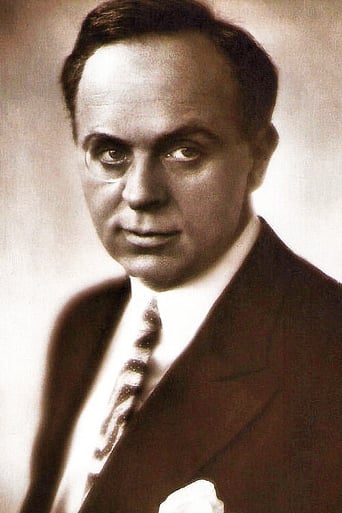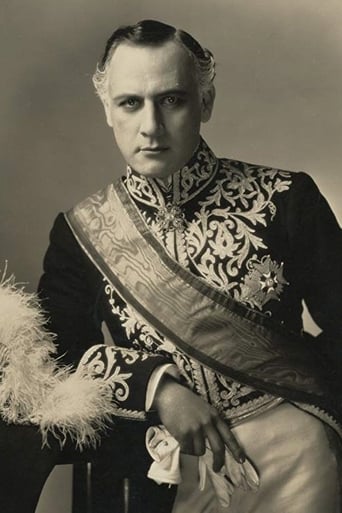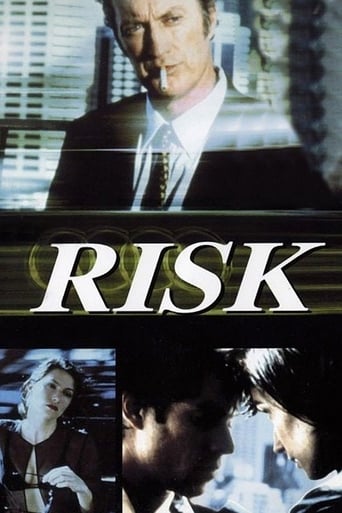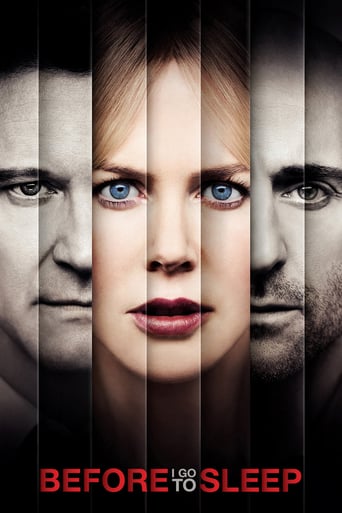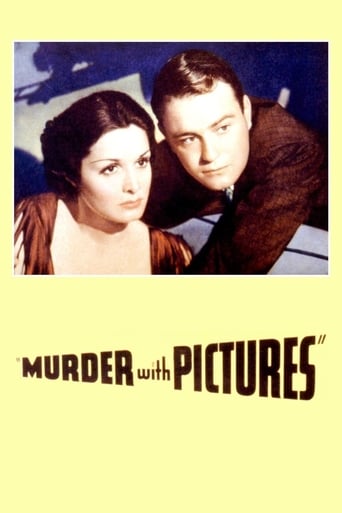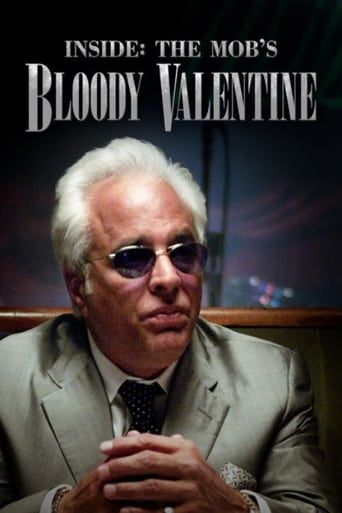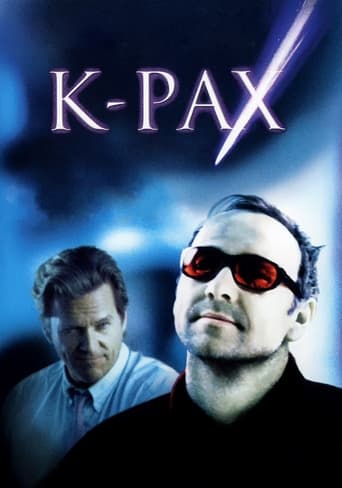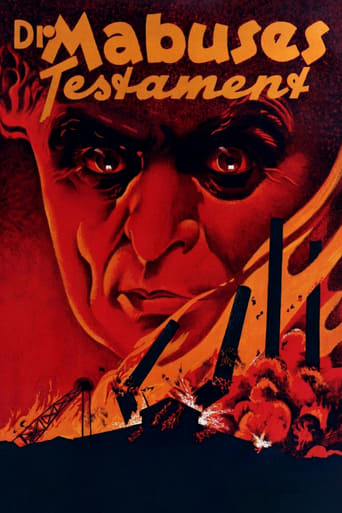

The Testament of Dr. Mabuse (1943)
After a detective is assaulted by thugs and placed in an asylum run by Professor Baum, he observes the professor's preoccupation with another patient, the criminal genius Dr. Mabuse the hypnotist. When Mabuse's notes are found to be connected with a rash of recent crimes, Commissioner Lohmann must determine how Mabuse is communicating with the criminals, despite conflicting reports on the doctor's whereabouts, and capture him for good.
Watch Trailer
Cast
Similar titles
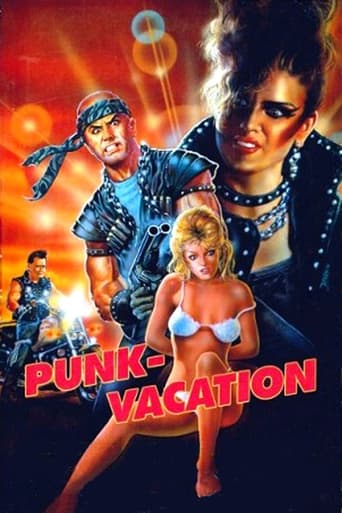
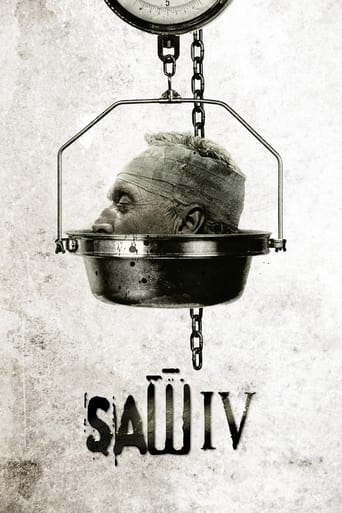
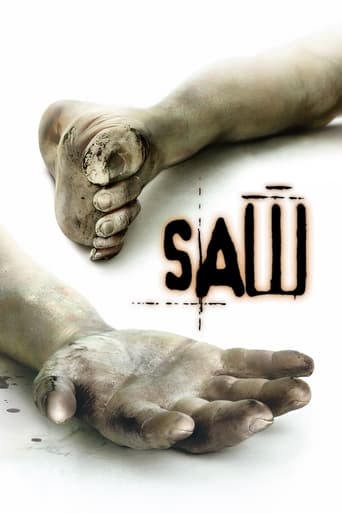
Reviews
Just perfect...
This story has more twists and turns than a second-rate soap opera.
A movie that not only functions as a solid scarefest but a razor-sharp satire.
Although I seem to have had higher expectations than I thought, the movie is super entertaining.
This film from Fritz Lang, who also gave us M and METROPOLIS, has some good bits but mostly it's just dialogue - subtitled dialogue, too. The film's main fault lies in the running time - it's on for far too long, and a bit of judicious cutting would have made things a lot more bearable. For the most part it's a typical thriller with a lone policeman hunting down a gang of criminals - there are lots of mystery elements and minor subplots about tragic lovers and one memorable insane guy, who sings whenever anybody gets too close.The acting ranges from the good to poor - the good being the gruff police inspector, who is an outsider among his peers. He's fairly clichéd, yes, but I liked him. Unfortunately to counter this interesting character there's some awful love filler with a ludicrous mugging woman who really annoyed me - but then we can't have everything.Where the film does work is in the minor horror elements which crop up. One such scene has a character being haunted by the spirit of Mabuse, who appears with huge spooky-looking eyeballs. The special effects are also pretty good, with some nice explosions and people being superimposed over the action. Adventure fans will enjoy a tense shootout and one of those classic moments which has a couple trapped in a flooding locked room, but these fun moments are few and far between. It's an intelligent and remarkable film, yes, but just not one which is particularly enjoyable.
The Testament of Dr. Mabuse (1933) *** 1/2 (out of 4) Fritz Lang's follow-up to his 1922 DR. MABUSE: THE GAMBLER finds the crazed doctor locked in a mental asylum where he hasn't said a word since his capture. Overtime he began doing strange drawings but it's nothing more than rubbish. Or is it? Pretty soon an Inspector is investigating these strange writings and whether or not Mabuse is communicating with someone on the outside.Lang once again hits a home run in regards to his beloved Dr. Mabuse character. There's no question that the original movie was a landmark for German cinema and even this film has its place in history. I say this because many believe the film was a warning against the Nazi party that was rising in Germany and it ended up getting the film banned for over twenty years. Lang also left Germany after making this film and wouldn't return until the end of his career. There's a lot going on in THE TESTAMENT OF DR. MABUSE and it's certainly highly entertaining.I think what I enjoyed most about the film is that we are given several strong characters who are doing battle here. Usually in these type of crime films you have a good guy and a bad guy but that's not the case here because we get at least six strong characters. The Inspector was certainly a lot of fun and the evil Dr. Mabuse gets many great scenes. You've also got Kent, a broke man who finally manages to get a job but he isn't quite ready for what he's gotten himself into. There's also a doctor who finds himself knowing a bit too much for his own good.The characters are all extremely strong and help keep the film moving but there's also Lang's masterful direction. There are a lot of twists and turns throughout the film but Lang keeps everything moving at a fast pace and he also manages to not make the film too confusing as to where people can't follow it. Visually the film is quite impressive and especially the "ghosts" and their hauntings. THE TESTAMENT OF DR. MABUSE isn't quite as great as METROPOLIS or M but there's no question that it's another very good picture from Lang.
Like the other films of Friz Lang, this is an authoritarian movie. When you watch a film noir from the Hayes code era you get the same idea. But not as strong. Yet Germany did not have a Hayes code. When in States that was imposed, the studios wanted to comply. In the case of Lang this is no compliance. This is his wish. His dream world.Maybe Lang was just depicting the German society in Berlin those days. But I can't help remarking the irony of the compatibility between his artistic expression and the Germany wanted by the Nazi. Of the stupid detail standing between them: Lang's grandparents. If they were anything but Jewish, maybe Lang would have shot the Triumph of the Will.Contact me with Questions, Comments or Suggestions ryitfork @ bitmail.ch
I rate the silent Mabuse from '22 as one of the most important films we have, in hindsight one of the most influential as well. It laid all the groundwork for film noir, the visible space of the story as the stage of some chaotic spiel manipulated from above and the players who act it out tied with strings to where the manipulation is taking place.The notion is largely the same in this sound incarnation; the criminal mastermind who under various guises controls the world we experience as the narrative of the film, and our frustrated attempts to apprehend him. But it fails in one important aspect. In that first Mabuse, we could see from both sides of the mirror, both the manipulator and the world he held on strings. In one fantastic scene taking place in what looked like a movie theater, and so referencing the movie illusion we were seeing from our position as viewers, these two perspectives aligned even. Here Mabuse is obscured by another remove, the various gangs who do his bidding around town.So instead of spending time with the illusionist, we follow common crooks. A man led astray, but who is basically good and saved by love. The inspector and his cronies as they try to disentangle the thread. It's like M all over again, for the most part a crime movie as a clockwork game of checkers between different groups of people that fight to be in the right place first.But it's successful, to the degree that it is, for the same reason. No, it's nothing to do with the cinematic. Lang was talented with hard allusions - there's a famous scene at a crossroads here - but otherwise simply hard with actors and camera. It's exactly that Mabuse is transferred out of sight that provides the extra layer, or at best that he flickers like some spectral emanation.What film noir did with these films when it finally reached America, is that it transferred Mabuse out of sight so that our focus was guided to the chaotic world below, where easy money beckoned, but which was now felt - no longer seen - as being controlled from somewhere. Here we can actually see the very process, how Mabuse is transmuted from a human being to a force that pervades everywhere and anxiety dissolves in the air itself.Two images are astounding in this sense, and however clunky the middle part about cops and crooks you should ultimately see this because of these two.One is the place where the henchmen receive their orders, a voice and a shadow addressing them from behind a curtain, and so a mysterious presence, a force, an emanation from a higher level, but no longer a person you can identify or put behind bars. And if we peel the curtain, we get what? But of course the cinematic illusion.The other is one of the few instances we actually see Mabuse. Locked inside the mental asylum, he's writing from his bed what is essentially the plot of the movie we see, heist movie stuff. We see him perched on the bed, taut, motionless, eyes fixed nowhere, as though withdrawn in malevolent meditation. His masterplan is to send the world wheeling into mindless chaos, destruction, finally the ashes from which it can be reborn. Lang couldn't have grasped the full implications of this, this was after all the part that was supposedly meant to reflect the contemporary insidious evils of Hitler, but this particular Mabuse, no longer a simple criminal mind as in the first film, not merely content to contort reality for the sake of money or a woman but with ultimately reassembling it as his highest aim, and so a cosmic Mabuse, is what in Eastern philosophy was rendered as the universal destroyer aspect of Shiva.Mabuse is interpreted for us as evil, because what he represents - here the dissolution of order - we understand as terrifying, have to. Likewise images of Shiva in his incarnation as Bhairava, the destroyer, are always meant to strike fear. The ghastly eyes of Mabuse immortalized in movie posters is that graven image. But that is, of course, only one aspect of him. It's the same Shiva that creates the world all over again. Mabuse by comparison is the corrupted human who would like to play god, he has mastered the mind but is none the wiser.
